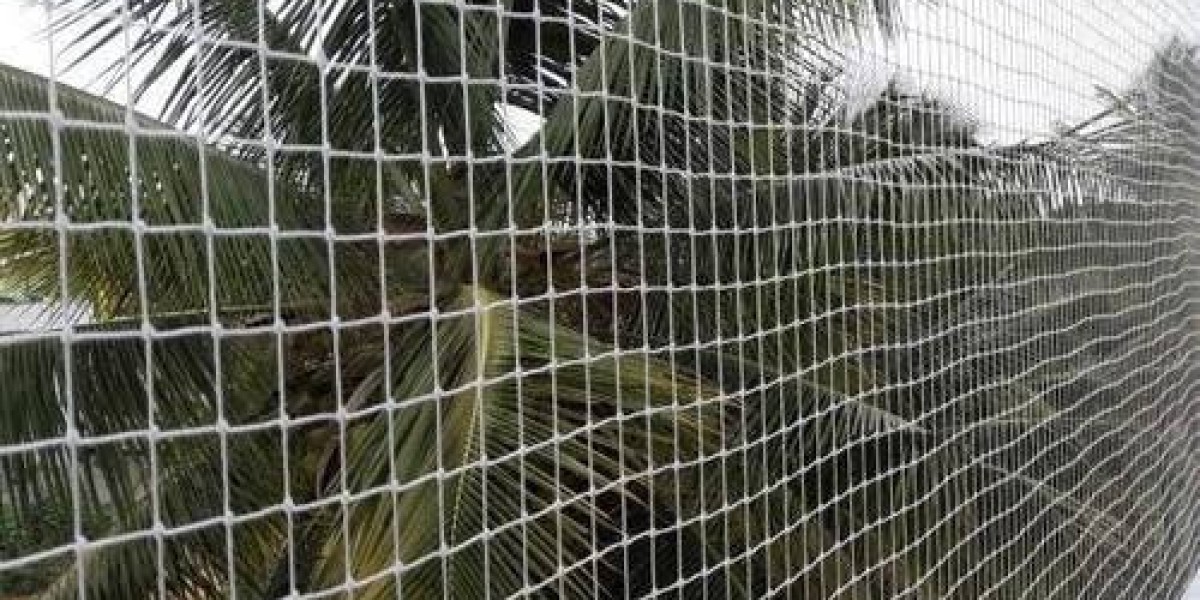In construction and industrial sectors, the choice of materials plays a crucial role in ensuring efficiency, safety, and durability. One such versatile material that has gained immense popularity is HDPE netting. This lightweight, cost-effective, and highly durable solution has become a go-to option for various applications in these industries.
HDPE netting is made from high-density polyethylene, a thermoplastic polymer known for its strength, flexibility, and resistance to environmental stress. Whether it’s for safety, protection, or support, HDPE netting offers numerous advantages over traditional materials. Here are the top 10 benefits of using HDPE netting in construction and industrial applications.
- High Durability and Strength
HDPE netting is incredibly strong and can withstand heavy loads and intense pressure. This makes it ideal for scaffolding nets, construction safety nets, and debris containment. Unlike traditional materials like metal, HDPE does not corrode or weaken over time, ensuring long-lasting performance.
- Lightweight and Easy to Install
Compared to metal meshes or heavy-duty protective sheets, HDPE netting is lightweight and flexible, making it easier to handle, transport, and install. Workers can set up the netting quickly and safely, which reduces labor costs and downtime.
- Excellent UV and Weather Resistance
In construction and industrial environments, exposure to sunlight, rain, and extreme weather is inevitable. HDPE netting is UV-stabilized, meaning it won’t degrade or weaken when exposed to sunlight for long periods. This makes it suitable for outdoor construction sites and agricultural use.
- Cost-Effective Solution
HDPE netting provides an affordable alternative to traditional metal or fabric materials. Its longer lifespan, lower maintenance costs, and ease of installation translate to significant savings for businesses.
- High Flexibility and Customization
HDPE netting is available in a variety of sizes, thicknesses, and mesh densities. This makes it a versatile option that can be customized to meet specific project needs, whether it’s for construction scaffolding, perimeter safety, or industrial packaging.
- Enhanced Safety and Protection
Safety is paramount in construction and industrial workspaces. HDPE safety nets are designed to catch falling debris and protect workers from injury. Additionally, perimeter safety nets help prevent objects from falling off elevated platforms, reducing the risk of accidents.
- Corrosion and Chemical Resistance
Unlike metals, HDPE netting does not rust, corrode, or degrade when exposed to chemicals, moisture, or saltwater. This property makes it suitable for use in chemical plants, industrial production units, and marine environments.
- Low Maintenance Requirements
Because HDPE netting resists corrosion, weather, and UV exposure, it requires minimal maintenance. There is no need for regular cleaning, painting, or protective coatings as required for metal mesh alternatives.
- Eco-Friendly and Recyclable
HDPE is a recyclable material, making it an environmentally friendly choice for businesses looking to reduce their carbon footprint. It can be recycled into new products, reducing waste and promoting sustainability.
- Wide Range of Applications
HDPE netting is a multi-purpose material used in construction and industrial sectors for various tasks, including:
- Scaffolding and safety nets for fall protection.
- Debris containment nets to prevent the spread of dust and waste.
- Barrier nets for site perimeter safety.
- Industrial packaging to secure heavy equipment or materials during transportation.
Its adaptability across multiple use cases makes HDPE netting a go-to choice for a wide range of construction and industrial projects.
Conclusion
HDPE netting has become an indispensable material in construction and industrial applications, thanks to its strength, flexibility, and cost-effectiveness. From enhancing workplace safety to reducing operational costs, HDPE netting provides a comprehensive solution for a variety of challenges. Its UV resistance, lightweight design, and eco-friendliness make it the preferred choice for project managers, engineers, and site supervisors.
By leveraging the numerous benefits of HDPE netting, businesses can enhance productivity, reduce costs, and ensure better safety for workers and the environment. If you’re looking for a versatile, durable, and cost-effective solution, HDPE netting is the smart choice for your next project.



